The Mad Scientist Initiative brings together cutting-edge leaders and thinkers from the technology industry, research laboratories, academia, and across the military and Government to explore the impact of potentially disruptive technologies. Much like Johannes Gutenberg’s moveable type (illustrated above), these transformational game changers have the potential to impact how we live, create, think, and prosper. Understanding their individual and convergent impacts is essential to continued battlefield dominance in the Future Operational Environment. In accordance with The Operational Environment and the Changing Character of Future Warfare, we have divided this continuum into two distinct timeframes:
The Era of Accelerated Human Progress (Now through 2035):
The period where our adversaries can take advantage of new technologies, new doctrine, and revised strategic concepts to effectively challenge U.S. military forces across multiple domains. Game changers during this era include:
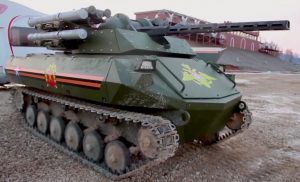 • Robotics: Forty plus countries develop military robots with some level of autonomy. Impact on society, employment.
• Robotics: Forty plus countries develop military robots with some level of autonomy. Impact on society, employment.
Vulnerable: To Cyber/Electromagnetic (EM) disruption, battery life, ethics without man in the loop.
Formats: Unmanned/Autonomous; ground/air vehicles/subsurface/sea systems. Nano-weapons.
Examples: (Air) Hunter/killer Unmanned Aerial Vehicle (UAV) swarms; (Ground) Russian Uran: Recon, ATGMs, SAMs.
 • Artificial Intelligence: Human-Agent Teaming, where humans and intelligent systems work together to achieve either a physical or mental task. The human and the intelligent system will trade-off cognitive and physical loads in a collaborative fashion.
• Artificial Intelligence: Human-Agent Teaming, where humans and intelligent systems work together to achieve either a physical or mental task. The human and the intelligent system will trade-off cognitive and physical loads in a collaborative fashion.
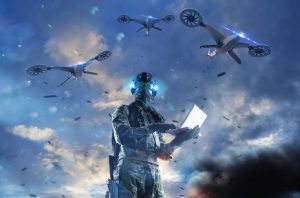 • Swarms/Semi Autonomous: Massed, coordinated, fast, collaborative, small, stand-off. Overwhelm target systems. Mass or disaggregate.
• Swarms/Semi Autonomous: Massed, coordinated, fast, collaborative, small, stand-off. Overwhelm target systems. Mass or disaggregate.
 • Internet of Things (IoT): Trillions of internet linked items create opportunities and vulnerabilities. Explosive growth in low Size Weight and Power (SWaP) connected devices (Internet of Battlefield Things), especially for sensor applications (situational awareness). Greater than 100 devices per human. Significant end device processing (sensor analytics, sensor to shooter, supply chain management).
• Internet of Things (IoT): Trillions of internet linked items create opportunities and vulnerabilities. Explosive growth in low Size Weight and Power (SWaP) connected devices (Internet of Battlefield Things), especially for sensor applications (situational awareness). Greater than 100 devices per human. Significant end device processing (sensor analytics, sensor to shooter, supply chain management).
Vulnerable: To Cyber/EM/Power disruption. Privacy concerns regarding location and tracking.
Sensor to shooter: Accelerate kill chain, data processing, and decision-making.
 • Space: Over 50 nations operate in space, increasingly congested and difficult to monitor, endanger Positioning, Navigation, and Timing (PNT)
• Space: Over 50 nations operate in space, increasingly congested and difficult to monitor, endanger Positioning, Navigation, and Timing (PNT)
GPS Jamming/Spoofing: Increasingly sophisticated, used successfully in Ukraine.
Anti Satellite: China has tested two direct ascent anti-satellite missiles.
The Era of Contested Equality (2035 through 2050):
The period marked by significant breakthroughs in technology and convergences in terms of capabilities, which lead to significant changes in the character of warfare. During this period, traditional aspects of warfare undergo dramatic, almost revolutionary changes which at the end of this timeframe may even challenge the very nature of warfare itself. Game changers during this era include:
 • Hyper Velocity Weapons:
• Hyper Velocity Weapons:
Rail Guns (Electrodynamic Kinetic Energy Weapons): Electromagnetic projectile launchers. High velocity/energy and space (Mach 5 or higher). Not powered by explosive.
No Propellant: Easier to store and handle.
Lower Cost Projectiles: Potentially. Extreme G-force requires sturdy payloads.
Limiting factors: Power. Significant IR signature. Materials science.
Hyper Glide Vehicles: Less susceptible to anti-ballistic missile countermeasures.
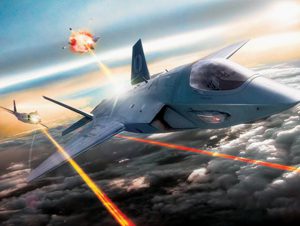 • Directed Energy Weapons: Signature not visible without technology, must dwell on target. Power requirements currently problematic.
• Directed Energy Weapons: Signature not visible without technology, must dwell on target. Power requirements currently problematic.
Potential: Tunable, lethal, and non-lethal.
Laser: Directed energy damages intended target. Targets: Counter Aircraft, UAS, Missiles, Projectiles, Sensors, Swarms.
Radio Frequency (RF): Attack targets across the frequency spectrum. Targets: Not just RF; Microwave weapons “cook targets,” people, electronics.
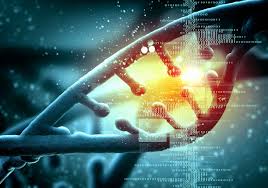 • Synthetic Biology: Engineering / modification of biological entities
• Synthetic Biology: Engineering / modification of biological entities
Increased Crop Yield: Potential to reduce food scarcity.
Weaponization: Potential for micro-targeting, Seek & destroy microbes that can target DNA. Potentially accessible to super-empowered individuals.
Medical Advances: Enhance soldier survivability.
Genetic Modification: Disease resistant, potentially designer babies and super athletes/soldiers. Synthetic DNA stores digital data. Data can be used for micro-targeting.
CRISPR: Genome editing.
 • Information Environment: Use IoT and sensors to harness the flow of information for situational understanding and decision-making advantage.
• Information Environment: Use IoT and sensors to harness the flow of information for situational understanding and decision-making advantage.
In envisioning Future Operational Environment possibilities, the Mad Scientist Initiative employs a number of techniques. We have found Crowdsourcing (i.e., the gathering of ideas, thoughts, and concepts from a wide variety of interested individuals assists us in diversifying thoughts and challenging conventional assumptions) to be a particularly effective technique. To that end, we have published our latest, 2-page compendium of Potential Game Changers here — we would like to hear your feedback regarding them. Please let us know your thoughts / observations by posting them in this blog post’s Comment box (found below, in the Leave a Reply section). Alternatively, you can also submit them to us via email at: usarmy.jble.tradoc.mbx.army-mad-scientist@mail.mil. Thank you in advance for your contributions!



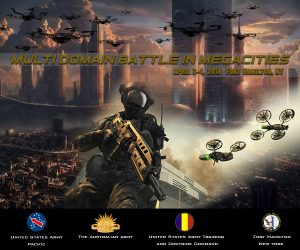 The U.S. Army Training and Doctrine Command (TRADOC) G-2, in partnership with U.S. Army Pacific (USARPAC) and the Australian Army, facilitated the Multi-Domain Battle (MDB) in Megacities Conference on April 3-4, 2018 at Fort Hamilton, New York. Briefings and videos from this event are now posted on the Mad Scientist APAN Site’s MDB in Megacities
The U.S. Army Training and Doctrine Command (TRADOC) G-2, in partnership with U.S. Army Pacific (USARPAC) and the Australian Army, facilitated the Multi-Domain Battle (MDB) in Megacities Conference on April 3-4, 2018 at Fort Hamilton, New York. Briefings and videos from this event are now posted on the Mad Scientist APAN Site’s MDB in Megacities  • Rapid growth in urban areas will produce more demand on the infrastructure and flow systems, more waste, and increased urban density.
• Rapid growth in urban areas will produce more demand on the infrastructure and flow systems, more waste, and increased urban density. • A major challenge of megacities is density (data, people, and infrastructure).
• A major challenge of megacities is density (data, people, and infrastructure). • The absence of clearly demarcated boundaries for the area of operations will be problematic.
• The absence of clearly demarcated boundaries for the area of operations will be problematic. • The Army will have to consider the rural and regional areas around megacities as well as the world-wide implications of operations within megacities.
• The Army will have to consider the rural and regional areas around megacities as well as the world-wide implications of operations within megacities. • The proliferation of advanced weaponry, coupled with the rapid digital spread of information and ideology, allows anyone to be a threat and will lead to growing instability in many parts of the world.
• The proliferation of advanced weaponry, coupled with the rapid digital spread of information and ideology, allows anyone to be a threat and will lead to growing instability in many parts of the world.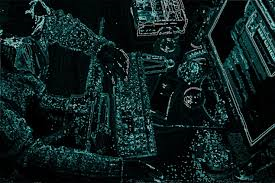 • Changing infrastructure, subcultures, and places to “hide in plain sight” present a particular challenge to data gathering.
• Changing infrastructure, subcultures, and places to “hide in plain sight” present a particular challenge to data gathering.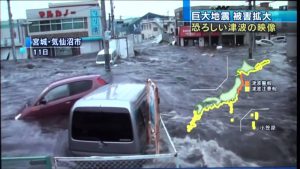 • Megacities are more susceptible to natural and manmade disasters when in close proximity to large bodies of water. Extreme water events caused by floods, hurricanes, typhoons, and tsunamis will exacerbate life threatening situations in areas of increased urbanization.
• Megacities are more susceptible to natural and manmade disasters when in close proximity to large bodies of water. Extreme water events caused by floods, hurricanes, typhoons, and tsunamis will exacerbate life threatening situations in areas of increased urbanization. Urban vertical and subterranean warfare significantly complicate Army operations, freedom of movement, and force protection.
Urban vertical and subterranean warfare significantly complicate Army operations, freedom of movement, and force protection.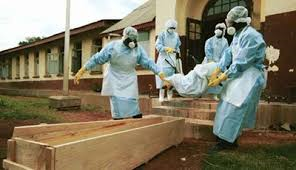 • Disease in megacities can result in catastrophic, global outcomes. Infectious disease will interface with urbanization, impacting military missions (e.g. warfare, humanitarian missions, and force protection). Rapid growth of dense urban areas in developing countries will continue to push people into environments that put them in greater contact with animal reservoirs of disease. Denial, fear, misinformation, decontamination, and disposal are among the many factors future military forces may have to contend with.
• Disease in megacities can result in catastrophic, global outcomes. Infectious disease will interface with urbanization, impacting military missions (e.g. warfare, humanitarian missions, and force protection). Rapid growth of dense urban areas in developing countries will continue to push people into environments that put them in greater contact with animal reservoirs of disease. Denial, fear, misinformation, decontamination, and disposal are among the many factors future military forces may have to contend with. • Adoption of a city as a system of systems perspective will require adaptation of a significant portion of Army doctrine resulting in an urban analytic framework tailored to address the operational data layers found within urban centers, their environmental dynamism, and their state of connectedness.
• Adoption of a city as a system of systems perspective will require adaptation of a significant portion of Army doctrine resulting in an urban analytic framework tailored to address the operational data layers found within urban centers, their environmental dynamism, and their state of connectedness.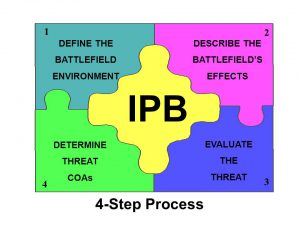 • The dynamic nature of urban environments demands an expansion of traditional Intelligence Preparation of the Battlefield (IPB) thinking. IPB often fails to gain sight of the dynamics between the components of problems within an interactively complex system and is not conducive to an interactively complex Operational Environment. The basic definition of IPB often does not take into account how the variables explaining Dense Urban Areas are increasingly interconnected, offers little instruction on how to address a complex, multidimensional environment, and provides little operational advice or examples.
• The dynamic nature of urban environments demands an expansion of traditional Intelligence Preparation of the Battlefield (IPB) thinking. IPB often fails to gain sight of the dynamics between the components of problems within an interactively complex system and is not conducive to an interactively complex Operational Environment. The basic definition of IPB often does not take into account how the variables explaining Dense Urban Areas are increasingly interconnected, offers little instruction on how to address a complex, multidimensional environment, and provides little operational advice or examples. 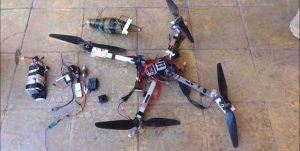 • Megacities research needs to better address the likelihood of more lethal competitors. Current mental models are stuck on non-hybrid, warrior-like opponents.
• Megacities research needs to better address the likelihood of more lethal competitors. Current mental models are stuck on non-hybrid, warrior-like opponents. • Changes in doctrine to enable the development of knowledge experts in megacities is needed where personnel are assigned to monitor cities.
• Changes in doctrine to enable the development of knowledge experts in megacities is needed where personnel are assigned to monitor cities.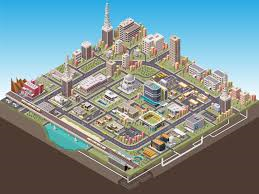 • Greater emphasis must be placed on strategically supporting, manipulating, and/or undermining the flows, infrastructure, and systems of the megacity, as opposed to current emphasis on kinetic, military tasks.
• Greater emphasis must be placed on strategically supporting, manipulating, and/or undermining the flows, infrastructure, and systems of the megacity, as opposed to current emphasis on kinetic, military tasks.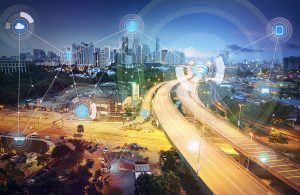 • The Army must change its thinking to focus more on rigorous big data-driven analysis, instead of relying largely on the same reductionist models that limit holistic thinking.
• The Army must change its thinking to focus more on rigorous big data-driven analysis, instead of relying largely on the same reductionist models that limit holistic thinking.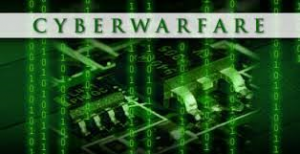 • The Army must change its attitude towards
• The Army must change its attitude towards 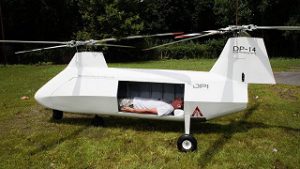 • A shift in how medical data is defined, stored, captured, visualized, and shared is needed for more easily transportable semi-autonomous and autonomous Tactical Combat Casualty Care capabilities to support future missions. This will require a paradigm shift in the practice of operational medicine from an “art” that employs subjective measures to assess and treat, to a “science” based on employing objective quantifiable measures.
• A shift in how medical data is defined, stored, captured, visualized, and shared is needed for more easily transportable semi-autonomous and autonomous Tactical Combat Casualty Care capabilities to support future missions. This will require a paradigm shift in the practice of operational medicine from an “art” that employs subjective measures to assess and treat, to a “science” based on employing objective quantifiable measures. • Faster technological iteration and adaptation is needed as opposed to large, long-term development, acquisition, and sustainment programs. Smaller, faster, and more flexible systems to supplement, or supersede, existing weapons and other systems with
• Faster technological iteration and adaptation is needed as opposed to large, long-term development, acquisition, and sustainment programs. Smaller, faster, and more flexible systems to supplement, or supersede, existing weapons and other systems with 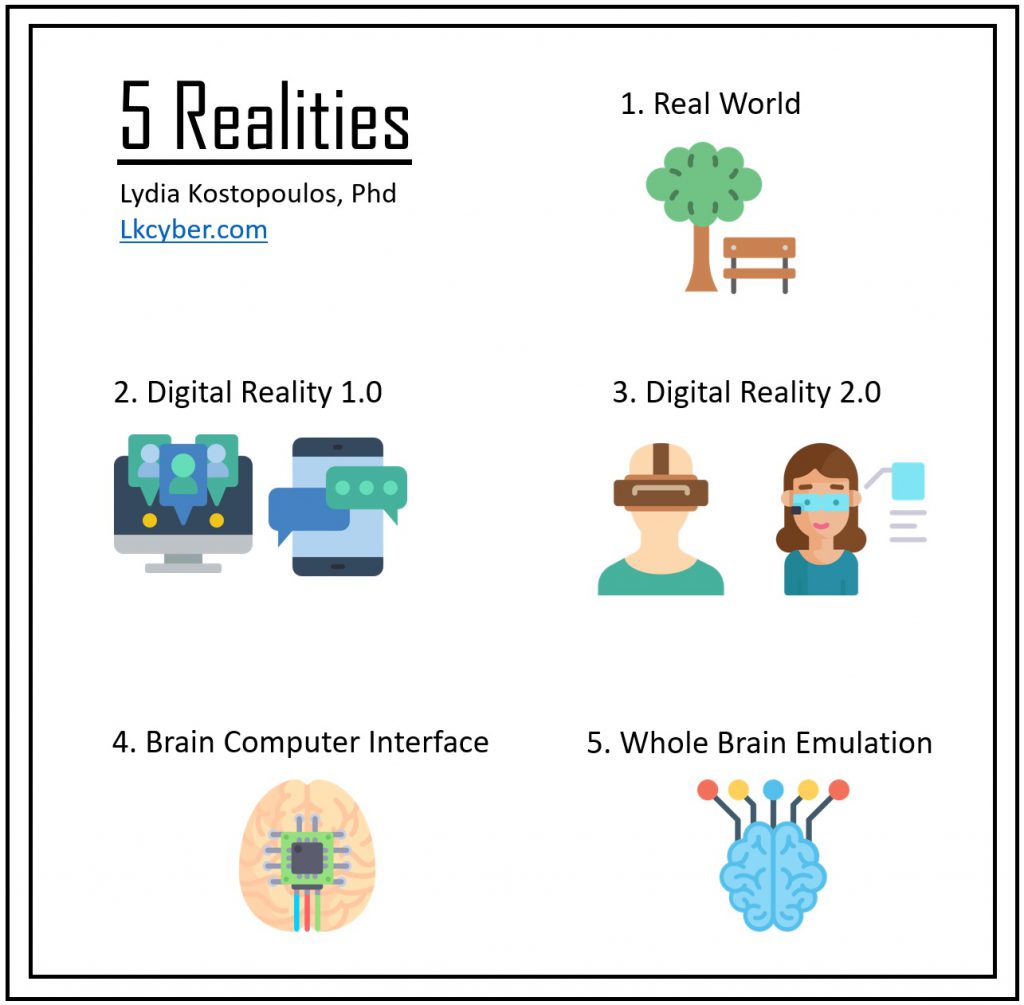
 1. Real World: Pre-internet real, touch-feel-and-smell world.
1. Real World: Pre-internet real, touch-feel-and-smell world. 2. Digital Reality 1.0: There are many already existing digital realities that people can immerse themselves into, which include gaming, as well as social media and worlds such as
2. Digital Reality 1.0: There are many already existing digital realities that people can immerse themselves into, which include gaming, as well as social media and worlds such as 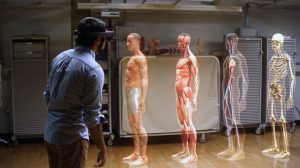 3. Digital Reality 2.0: The Mixed Reality (MR) world of Virtual Reality (VR) and Augmented Reality (AR). These technologies are still in their early stages; however, they show tremendous potential for receiving, and perceiving information, as well as experiencing narratives through synthetic or captured moments.
3. Digital Reality 2.0: The Mixed Reality (MR) world of Virtual Reality (VR) and Augmented Reality (AR). These technologies are still in their early stages; however, they show tremendous potential for receiving, and perceiving information, as well as experiencing narratives through synthetic or captured moments. 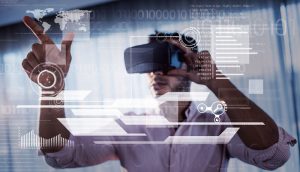 Suspended moments of actual real-world environments involve 360 degree cameras which capture a video moment in time; these already exist and the degree in which it feels like the VR user is teleported to that geographical and temporal moment in time will, for the most part, depend on the quality of the video and the sound. This VR experience can also be modified, edited and amended just like regular videos are edited today. This, coupled with technologies that authentically replicate voice (ex: Adobe VoCo) and technologies that can change faces in videos, create open-ended possibilities for ‘fake’ authentic videos and soundbites that can be embedded.
Suspended moments of actual real-world environments involve 360 degree cameras which capture a video moment in time; these already exist and the degree in which it feels like the VR user is teleported to that geographical and temporal moment in time will, for the most part, depend on the quality of the video and the sound. This VR experience can also be modified, edited and amended just like regular videos are edited today. This, coupled with technologies that authentically replicate voice (ex: Adobe VoCo) and technologies that can change faces in videos, create open-ended possibilities for ‘fake’ authentic videos and soundbites that can be embedded.  Some say the combination of voice command, artificial intelligence, and AR will make screens a thing of the past. Google is experimenting with their new app
Some say the combination of voice command, artificial intelligence, and AR will make screens a thing of the past. Google is experimenting with their new app 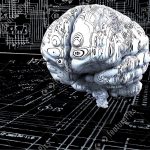 4. Brain Computer Interface (BCI): Also called Brain Machine Interface (BMI). BCI has the potential to create another reality when the brain is seamlessly connected to the internet. This may also include connection to artificial intelligence and other brains. This technology is currently being developed, and the space for ‘minimally invasive’ BCI has exploded. Should it work as intended, the user would, in theory, be directly communicating to the internet through thought, the lines would blur between the user’s memory and knowledge and the augmented intelligence its brain accessed in real-time through BCI.
4. Brain Computer Interface (BCI): Also called Brain Machine Interface (BMI). BCI has the potential to create another reality when the brain is seamlessly connected to the internet. This may also include connection to artificial intelligence and other brains. This technology is currently being developed, and the space for ‘minimally invasive’ BCI has exploded. Should it work as intended, the user would, in theory, be directly communicating to the internet through thought, the lines would blur between the user’s memory and knowledge and the augmented intelligence its brain accessed in real-time through BCI. 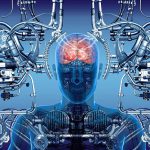 In this sense it would also be able to communicate with others through thought using BCI as the medium. The sharing of information, ideas, memories and emotions through this medium would create a new way of receiving, creating and transmitting information, as well as a new reality experience. However, for those with a
In this sense it would also be able to communicate with others through thought using BCI as the medium. The sharing of information, ideas, memories and emotions through this medium would create a new way of receiving, creating and transmitting information, as well as a new reality experience. However, for those with a 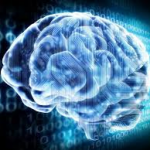 5. Whole Brain Emulation (WBE): Brings a very new dimension to the information landscape. It is very much still in the early stages, however, if successful, this would create a virtual immortal sentient existence which would live and interact with the other realities. It is still unclear if the uploaded mind would be sentient, how it would interact with its new world (the cloud), and what implications it would have on those who know or knew the person.
5. Whole Brain Emulation (WBE): Brings a very new dimension to the information landscape. It is very much still in the early stages, however, if successful, this would create a virtual immortal sentient existence which would live and interact with the other realities. It is still unclear if the uploaded mind would be sentient, how it would interact with its new world (the cloud), and what implications it would have on those who know or knew the person. 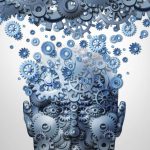 As the technology is still new, many avenues for brain uploading are being explored which include it being done while a person is alive and when a person dies. Ultimately a ‘copy’ of the mind would be made and the computer would run a simulation model of the uploaded brain, it is also expected to have a conscious mind of its own. This uploaded, fully functional brain could live in a virtual reality or in a computer which takes physical form in a robot or biological body. Theoretically, this technology would allow uploaded minds to interact with all realities and be able to create and share information.
As the technology is still new, many avenues for brain uploading are being explored which include it being done while a person is alive and when a person dies. Ultimately a ‘copy’ of the mind would be made and the computer would run a simulation model of the uploaded brain, it is also expected to have a conscious mind of its own. This uploaded, fully functional brain could live in a virtual reality or in a computer which takes physical form in a robot or biological body. Theoretically, this technology would allow uploaded minds to interact with all realities and be able to create and share information.  For example, if Osama bin Laden’s brain had been uploaded to the cloud, his living followers for generations to come could interact with him and acquire feedback and guidance. Another example is Adolf Hitler;
For example, if Osama bin Laden’s brain had been uploaded to the cloud, his living followers for generations to come could interact with him and acquire feedback and guidance. Another example is Adolf Hitler;  if his brain were to have been uploaded, his modern-day followers would be able to interact with him through cognitive augmentation and AI. This of course could be used to ‘keep’ loved ones in our lives, however the technology has broader implications when it is used to perpetuate harmful ideologies, shape opinions, and mobilize populations into violent action. As mind-boggling as all this may sound, the WBE “hypothetical futuristic process of scanning the mental state of a particular brain substrate and copying it to a computer” is being scientifically pursued. In 2008, the Future of Humanity Institute at Oxford University published a technical report about the
if his brain were to have been uploaded, his modern-day followers would be able to interact with him through cognitive augmentation and AI. This of course could be used to ‘keep’ loved ones in our lives, however the technology has broader implications when it is used to perpetuate harmful ideologies, shape opinions, and mobilize populations into violent action. As mind-boggling as all this may sound, the WBE “hypothetical futuristic process of scanning the mental state of a particular brain substrate and copying it to a computer” is being scientifically pursued. In 2008, the Future of Humanity Institute at Oxford University published a technical report about the 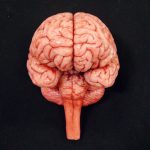 Despite the many questions that remain unanswered and a lack of a human brain upload proof of concept, a new startup,
Despite the many questions that remain unanswered and a lack of a human brain upload proof of concept, a new startup,